Making Eyes that See
Eyes are the windows to the soul. There is nothing that can so drastically improve or destroy your animation than how well you direct your character’s eyes. Carefully animated eyes can really sell the impression that these lines or computer generated pixel have a living soul. On the other hand-side rushed imprecise work can destroy the believability of in other respects decent animation.
This article is about making the pupils of your characters properly looking at something or someone and avoiding mistakes that can happen when you align the eyes.
Around the eyes
Usually the pupil rests on the eyelid. This way there is no white from the eyeball showing on at leas one side of the pupil. The actual eyeball is much bigger than what we see from the eye putting the rotation center into the skull.
Only for very strong reactions (from surprise, shock, sickness or craziness) we can see white all around the pupil.
If you need a character to look at the audience during a more “normal” expression you could put him in 3/4 so you have at least one pupil resting on the eyelid.
The eyelids usually move with the pupils e.g. when you look down the upper eyelid comes down too. A lot of 3d rigs with realistic eyelids do this automatically.
In fact you should use the shape of the whole eye area to indicate the direction of the look – and in cartoons you can push this pretty far.
In facial expressions everything is connected to everything else; our skin is highly deformable – and even more so for stylized cartoon characters. Eyelids, pupils, eyebrows, cheeks, the mouth, chin, even the bones, every element in the face can be deformed and used to support not only the overall emotion but also the direction of the eyes.
The Pupil
The form and shape of the pupils highly depends on the style you chose for your animation, but there is some general stuff that is good to know.
The pupils not only indicate the direction of the eyes but can also show the intensity. Big dark pupils feel warm, a stare with lots of iris showing and only a small black dot can be crazy or frightened.
Even if you go super realistic you can stick to this. A romantic candlelight dinner has less light so the pupils widen to let more light in – the eyes appear softer. A criminal being interrogated in a bright like will naturally have a closed iris and the eyes appear very tense.
To give the eyes a very clear direction it can help to make the pupils oval. Realistic eyes do that too. Because of the eyeball’s rotation they are only perfectly round while staring right into the camera. This method is vital for characters with no eyeballs.
Eye Contact
As easy this may sound, you have to make sure that the eyes are actually looking at whatever they are looking at. Often in the animation process of redrawing and readjusting they end up being slightly misaligned. Drawing eye-lines helps to see and correct this common mistake.
If two characters hold eye contact correctly you can create a strong connection, the feeling that there are two living creatures with a soul, feelings and thoughts interacting. The way how they look at each other can show and define their attitudes.
But this doesn’t mean your characters have to hold eye contact the whole time. Watch yourself while talking to someone, most of the time our eyes look around and only meet occasionally. Characters that make steady eye contact for more than a few seconds are either going to fight or make love (one of Ed Hook’s acting rules).
Make it unmistakably clear where the character is looking at. And when they look at each other make sure their eye-line really connects. If it is slightly off, it can feel a little disturbing (which you could of course use for mad characters e.g. they could stare at other peoples ears when they talk)
Looking without seeing
The eyes can reveal inner processes of the mind. When they do that they are not focused on anything in the outside world. Allegedly using the short term memory causes us to glance upward. Deeper thinking and thoughts from the long term memory make us look downwards. Sometimes we also stare into the distance seeing something with our inner eye.
Obviously there is a lot more to explore about how to draw and animate eyes and facial expressions in general, which I hope to cover in other articles eventually, but this should be the basics on how to direct your characters eyes. Make sure to check the eye-lines and don’t forget that the whole face can be used to clarify emotions and directions.
Questions about eyes for a future article? Leave a comment below and ask away!
UPDATE: The next article in this Eyes series is up and can be found here!


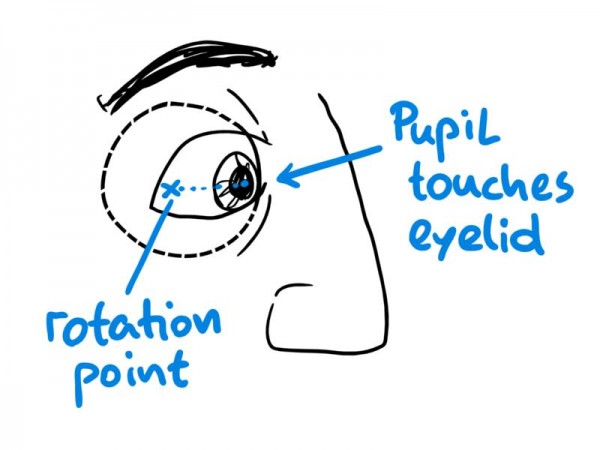
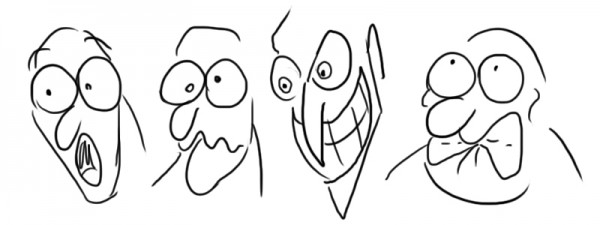
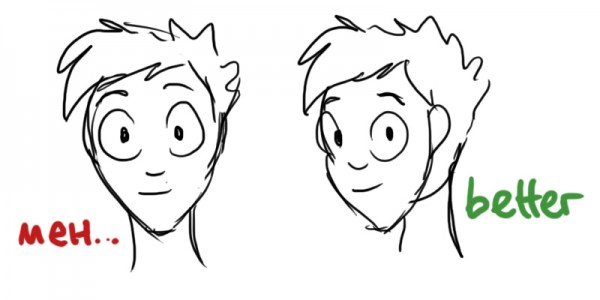
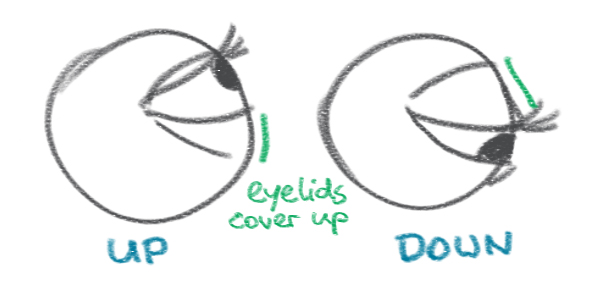
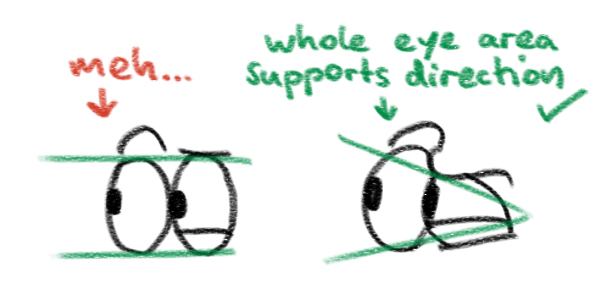
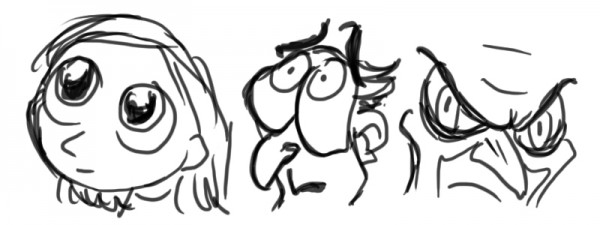
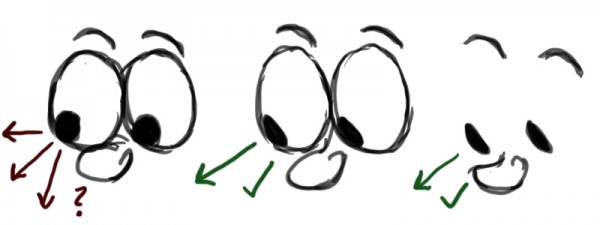
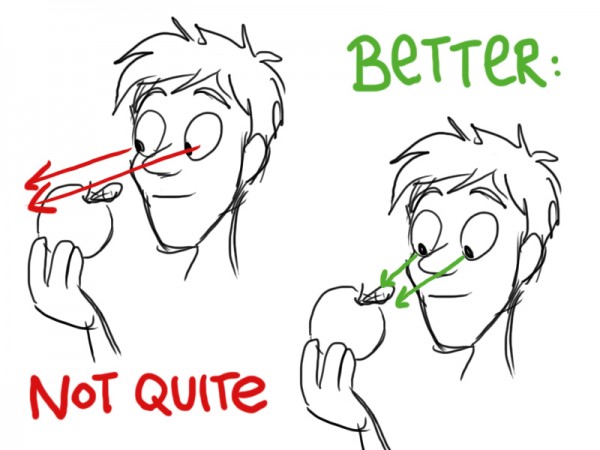
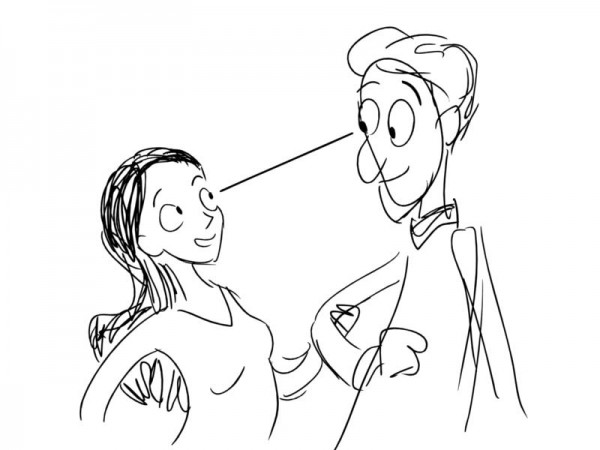
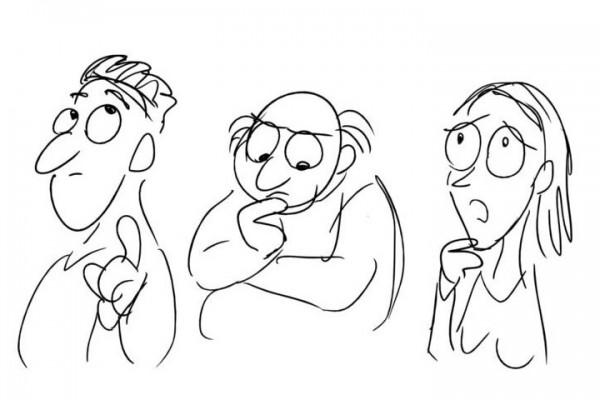

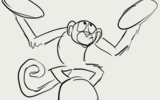
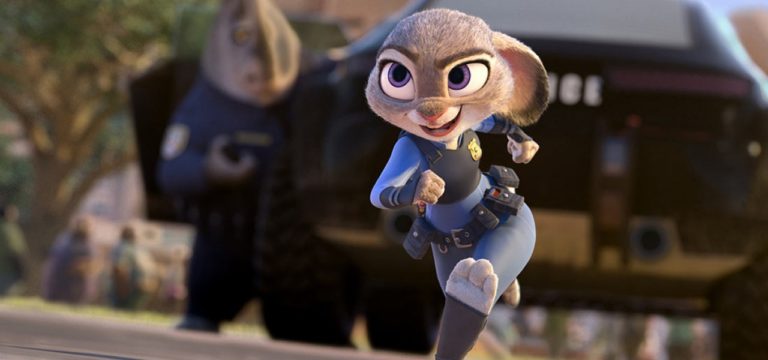



I’ve a question for next time then – How do you make it look like the eyeball is inside the head under skin? In 3D it’s easy because it is actually inside but in drawing my eyes look like they are on top instead of under if you know what I mean. Like in your first image but without the dot line.
I hope theres more articles on eyes they are super super super super tough.
Wow …great article.. thanks ..:):)
I have just started doing acting assignments and first part that I have to learn is to animate eyes meaningfuly
In my quest of learning acting in animation, I am in pursuit of the answers for the following questions since past few weeks
I would love to learn these things in upcoming articles.. thank you so much for doing this ..you are awesome … 🙂
1. How do you plan eyes, I mean I usually I have decent idea about what’s going to happen since I prepare rough pencil test first,
My question is,
What do you exactly look for in video reference regarding eyes?
What’s your usual process?
What are the most common or basic things you look for in eyes (eye movements)
2) there’s this really great article by Shawn Kelly “Blinks Have a meaning”
I would love to see your take on blinks..
Your usual thinking process about blinks
3) Eye movements usually could be strong narrative beats or sometimes connecting tissue between dramatic blocks
I usually see in badly animated movies, the mechanical blinks and intentional eye movements ignoring subtexts or actual words completely
How do you plan/ animate eye movements with respect to head and entire body motion ?
How to deal with subtext and narrative beats while planning and animating eyes ?
How to enhance the essence of that particular moment without making eye animation too much distracting from entire performance?
4) I love Dexter series, and Michael C. Hall is an amazing actor.
He has this incredible control over blinks, eye movements which amplifies the emotions and subtexts in the scenes at times he doesn’t even blink, its so brilliant
Do you have any reccommendations for eyes?
Or some specific scenes
& what should we be studying – looking while watching talented actors eyes
What are the things we should note down?
5) there this awesome scene in movie Bolt, where Bolt runs towards Penny but then realizes(thinks) he has been replaced.. he stops
His reactions, the eyes, the one slower blink.. its so perfect …amazing acting performance
How do you bring that finess – awesomeness in scene, with eyes and blinks?
What must be done right in these delicate scenes?
6) what are 3 foundational things one must do while planning eyes and why?
7) what’s the ultimate goal of eye animation or eye movements in a scene?
Of course it will mean different in differnet scenes and in different context
But what’s ultimate goal we should have for eyes in general?
our goals for eyes in body mechanics scenes?
our goals for eyes in pantomime?
our goals for acting scenes?
8) what are 4 most frequent things you see in eyes in badly animated acting scenes?
9) Usually big eyes are preferred for more expressiveness in eyes,
But what are the things you must do when you have to animate character like Rango who has tiny eyes & pupils?
10) How do you explain the relationship between eye brows – eyes – cheeks
What are the ways to animate them together meaningfully as a whole unit
11) do you have any tips while animating using the area between upper eyelids – brows?
12) I would love to see/ read about your thinking process for any of your shot where character is talking
How you planned your eyes? What you got from reference? How you amplified it?
How do you make clever choices?
What questions you consistently ask while animating eyes?
13) What are things that need to be considered while animating a character where the subtext is different than actual words ( for ex. Lying)
14) while animating animals what things need to be considered as there’s huge distance between eyes and mouth or it doesn’t make any difference whatsoever
15) how to deal with challenge of animal or bird eyes when they are far apart or on completely different sides?
16) I don’t remember exactly that it was Ken Duncan or Glen Keane but
One of them mentioned that sometimes with eyes,
Doing less is more…
There are some really impressive scenes in Tangled where characters are only breathing
How to sieze that opportunity of doing less is more?
What caution should be taken while doing that?
How to define that line between over animating eyes and expressive eyes?
Thank you for your interest 🙂 Wow… so many questions and a lot of them are not easy to answer 😀
I hope to complete an article for next week in respond. We will have a closer look at eye motions and how they work in connection to the body as well as how to get the best out of references. And then another follow up for the remaining questions. It’s a little more work because I want to include some animated examples. So lots of interesting stuff to come.
Stay tuned 🙂
Can’t wait
Wow…thanks…desperately waiting for upcoming articles … :):)
I appreciate the good work you are doing! I’ve really enjoyed reading it. You’ve arouse in me a great interest. I’ll investigate it more. Hope the questions above get tackled next!
WOW this was amazingly helpful!!! I cannot wait to see more in this series!
Very very very helpful!! 😀
This was very helpful to me do you think you can make more posts about eyes in animation? I think there is so much to learn. I do a lot of very nice animation and then I add the eyes and it looks bad because it is so important…
Elsis there is another one already if you look at the link at the bottom of the page is that what you mean?
I do 3D animation how can I use this to? Can you give examples in 3D please?